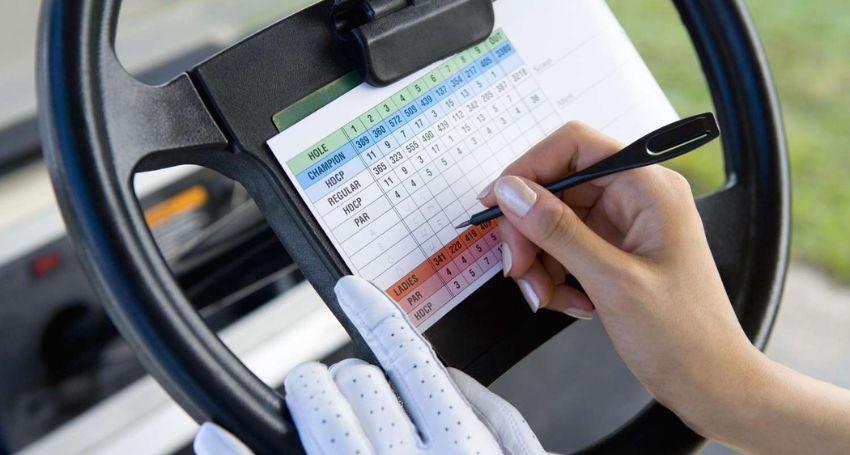A golf handicap is a crucial aspect of the game, allowing players of different skill levels to compete on an even playing field. This article will guide you through everything you need to know about the golf handicap system, including how to calculate your handicap, what it means, and how it impacts your performance on the golf course. Whether you’re new to golf or an experienced player, understanding your handicap can help you improve your game and track your progress.
What Is a Golf Handicap and Why Do You Need One
A golf handicap is a numerical value assigned to a golfer that represents their skill level, allowing players of varying abilities to compete against each other on a fair basis. The handicap system levels the playing field, enabling golfers with higher handicaps to compete against scratch golfers or those with lower handicaps by adding extra strokes to their score.
In essence, a handicap in golf is designed to provide every golfer, regardless of their skill, a fair chance to compete. Knowing your golf handicap helps you understand your strengths and weaknesses, providing a clear target for improvement.
Work?How Does the Golf Handicap System Work
The golf handicap system takes into account a player’s performance over their most recent rounds of golf, typically the last 20. The handicap is calculated by considering the golfer’s scores, the course rating, and the slope rating of each golf course they play. The handicap system ensures that golfers of different skill levels can play together, with each golfer receiving handicap strokes based on their handicap index and the difficulty of the course.
standardisesThe World Handicap System (WHS), managed by golf associations worldwide, standardizes the calculation to create consistency across all golf courses. It incorporates a course rating and a slope rating, which measure the difficulty of a course and how it plays for scratch golfers compared to players with handicaps.
Calculated?What Is a Handicap Index, and How Is It Calculated
standardisedA handicap index is a standardized measure used to calculate a golfer’s handicap. It reflects a golfer’s potential ability rather than their average score. To calculate a handicap index, you take the lowest 10 differentials out of the golfer’s most recent 20 rounds. The differential is the difference between the player’s score and the course rating, adjusted for slope rating.
standardisedThe formula for the handicap index involves subtracting the course rating from the score, multiplying by 113 (a standardized slope rating), and dividing by the actual slope rating of the course played. This provides a consistent method for calculating a golf handicap index that applies across different courses.
How to Calculate Your Golf Handicap
To calculate your golf handicap, you need your score from multiple rounds and information about the courses you played, including the course rating and slope rating. Here’s how to calculate a golf handicap:
- Record Scores: Track your scores for at least 20 rounds of golf.
- Calculate the Differentials: For each round, subtract the course rating from your score, multiply by 113, and divide by the slope rating.
- Find the Lowest Differentials: Use the lowest 10 differentials out of the 20.
- Average and Multiply: Average these differentials and multiply by 0.96 to get your handicap index.
By following these steps, you can accurately calculate your golf game handicap, allowing you to participate in tournaments and competitive rounds with an official handicap.
Calculation?What Role Do Slope and Course Ratings Play in Handicap Calculation
The slope rating and course rating are essential components of the golf handicap system. The course rating represents the difficulty of a course for a scratch golfer, while the slope rating measures how much more difficult the course will be for a bogey golfer compared to a scratch golfer.
For example, if a golf course has a course rating of 72 and a slope rating of 135, it indicates a challenging course, especially for those who are not scratch golfers. By incorporating these ratings into the handicap calculation, the system ensures that golfers receive an appropriate number of strokes based on the course difficulty, levelling the playing field for all participants.
How Can You Get a Golf Handicap
To get a golf handicap, golfers must join a local golf club affiliated with a recognised golf association. The club will track your scores and submit them to the association, which calculates your official handicap based on the rounds you play.
Additionally, many golf apps and online platforms allow golfers to track their rounds and calculate a golf handicap. However, to compete in official tournaments, you typically need an official handicap issued by a golf association like the United States Golf Association (USGA).
Why Is Knowing Your Handicap Important
Knowing your handicap is essential for improving your game and setting realistic goals. It offers insights into your strengths and weaknesses, helping you focus on areas that need improvement. It also allows you to compete fairly against golfers of different skill levels, as the handicap system adjusts your score accordingly.
Additionally, having a handicap is crucial for entering tournaments. Many events require participants to have an official handicap, ensuring that players are matched based on their skill levels. This enables fair competition and makes the game more enjoyable for everyone involved.
How to Improve Your Handicap
Improving your handicap requires a combination of practice, strategy, and understanding the game.
- Focus on Your Short Game: The short game is where most strokes are gained or lost. By practicing chipping and putting, golfers can significantly reduce their scores.
- Take Golf Lessons: Professional instruction can help refine your golf swing, improve your accuracy, and develop strategies for different parts of the golf course.
- Analyse Your Rounds: Reviewing your scorecard after each round and identifying areas where you could have saved strokes is crucial for improvement.
By implementing these strategies, golfers can lower their handicap and play at a more competitive level.
Golf Lessons and Their Impact on Lowering Your Handicap
Golf lessons can be a game-changer when it comes to lowering your handicap. Professional coaches offer personalised instruction that focuses on specific aspects of your game, such as improving your swing technique, mastering your short game, and developing course management skills.
Lessons also help golfers understand their current handicap, set achievable goals, and track their progress over time. Whether you’re new to golf or a seasoned player, lessons are an effective way to refine your skills and lower your handicap.
Conclusion
In conclusion, understanding your golf handicap is key to enhancing your game and competing fairly with players of all skill levels. Whether you’re just starting out or looking to lower your handicap, the system provides valuable insights to help you improve. You can make steady progress by focusing on techniques like improving your short game and taking professional lessons. For personalised training and expert advice to take your golf skills to the next level, contact us.
FAQ’s
- What does it mean to have a handicap of 5?
A handicap of 5 indicates that a golfer’s average score is five strokes above par on a standard golf course. This is considered a relatively low handicap, showing that the golfer is skilled. - How often should I update my handicap?
It’s important to update your handicap after every round of golf. Most golf associations and apps automatically adjust your handicap based on the scores you submit, ensuring that your handicap reflects your current skill level. - Can I play without a handicap?
While you can play casual rounds without a handicap, having an official handicap is essential for competitive play and for tracking your progress.





























































